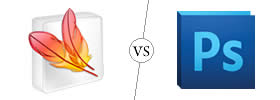Difference between Tangible and Intangible
Key Difference: Tangible refers to things that can be seen and touched. These are most of the things that exist around us. Intangible, on the other hand, refers to things that may or may not be seen, but they definitely cannot be touched.
 The concept of tangible and intangible might be a little difficult for some to grasp, however, it is not that difficult at all. Tangible and Intangible are two ways to describe something. An object can be either tangible or intangible.
The concept of tangible and intangible might be a little difficult for some to grasp, however, it is not that difficult at all. Tangible and Intangible are two ways to describe something. An object can be either tangible or intangible.
Tangible refers to things that can be seen and touched. These are most of the things that exist around us. For example, things like chair, table, etc. These are physical things that can be seen and touched, hence it can be said that these things are tangible.
Intangible, on the other hand, refers to things that may or may not be seen, but they definitely cannot be touched. The objects are real and they exist but they do not have a physical presence. For example: air or moonlight. These things exist and we can either see it or feel it, however, we cannot physically touch it. Hence, these things are intangible. Another example of intangible things is feelings; they too exist, however they cannot be seen or touched. They can only be felt and expressed.
Thus, nearly everything that exists in this world falls under one of these two categories. Things that exist and can be touched, i.e. tangible or things that cannot be touched, i.e. intangible, and that really is the only difference between the two terms.
 The terms tangible and intangible are also often used in the concept of assets, with tangible assets referring to assets that have a physical aspect, i.e. can be touched such as land, vehicles, equipment, machinery, furniture, inventory, stock, bonds, cash, etc. Intangible assets, on the other hand, are assets that do not have a physical presence and cannot be touched, such as patents, trademarks, franchises, goodwill, copyrights, etc. In order to be successful, a company should have a healthy combination of both tangible and intangible assets.
The terms tangible and intangible are also often used in the concept of assets, with tangible assets referring to assets that have a physical aspect, i.e. can be touched such as land, vehicles, equipment, machinery, furniture, inventory, stock, bonds, cash, etc. Intangible assets, on the other hand, are assets that do not have a physical presence and cannot be touched, such as patents, trademarks, franchises, goodwill, copyrights, etc. In order to be successful, a company should have a healthy combination of both tangible and intangible assets.
Comparison between Tangible and Intangible:
|
|
Tangible |
Intangible |
|
Definition (Oxford Dictionaries) |
A thing that is perceptible by touch. Clear and definite; real. |
Unable to be touched; not having physical presence. Difficult or impossible to define or understand; vague and abstract.
|
|
Type |
Adjective |
Adjective |
|
Presence |
Has a physical presence |
Does not have a physical presence |
|
Touch |
Can be touched |
Cannot be touched |
|
Assets |
Assets that have a physical aspect, i.e. can be touched such as land, vehicles, equipment, machinery, furniture, inventory, stock, bonds, cash, etc. |
Assets that do not have a physical presence and cannot be touched, such as patents, trademarks, franchises, goodwill, copyrights, etc. |
Reference: Oxford Dictionaries (Tangible and Intangible), Wordpandit, Investopedia Image Courtesy: tuvie.com, brucemctague.com









Add new comment